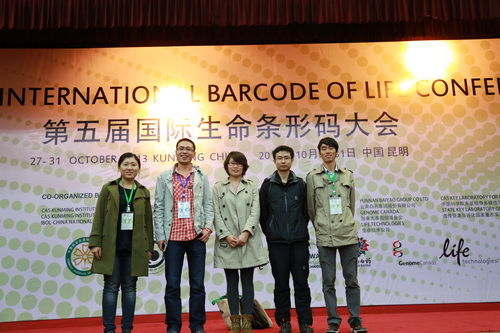|
In early 2003, scientists at the University of Guelph proposed using short genetic sequence from a standard part of the genome as a marker to distinguish between different species. This notion of using a “Barcode” to rapidly and accurately identify species eventually proved to be a viable technique that overcame some of the obstacles inherent in traditional taxonomy, which is often based on specialists examining morphological features such as shape, size and color of body parts. While barcoding does not replace the need for specialized taxonomists, it makes the initial identification of separate species quite easy, allowing non-specialists to generate barcodes from small amounts of tissue that can be gathered locally that can then be uploaded to larger repositories for duration and further analysis.
The success of DNA barcoding eventually led to the formation of the International Barcode of Life Project, a joint international effort to setup regional centers for DNA barcoding across the globe. In 2011, the Southern China DNA Barcoding Center (SCDBC) was established to barcode species inhabiting southwestern China and Southeast Asia, making it the first and only such facility focus in China. In the three since its inception, the SCDBC has generated over 21,000 barcode records and collected over 8,000 images from the original pinned specimens, both of which have been used by researchers in China and abroad. The SCDBC has also played a key role in advancing the iBoL project and basic research into DNA barcoding through its development of effective and fast methods of sequencing mitochondrial genome using Ion Torrent platforms, as well as other research into the application of DNA barcoding to food traceability, paternity testing of animals, and biodiversity monitoring.
In addition to its overall mandate of basic DNA barcoding, the SCDBC also houses the management office of Animalia Resource Bank, a branch of Germplasm Bank of Wild Species that focuses on Wild and domestic animals resources collection and storage, and also administers several key projects, including the Cold Code Project and DNA Barcoding for Nature Reserves. The Cold Code Project focuses on DNA barcoding Amphibians and Reptiles, while the DNA Barcoding for Nature Reserves provides a high-throughput barcoding laboratory that assists in the collection, storage and management of genetic resources from nature reserves in China. As part of these projects and others, the SCDBC also holds regular training seminars in DNA barcoding, both in Kunming and Lijiang.
In 2013, the participating institutions behind the SCDBC also had the honor of hosting the 5th international Barcode of Life Conference, which was attended by researchers from over 30 countries all working in different areas of DNA barcoding. |



